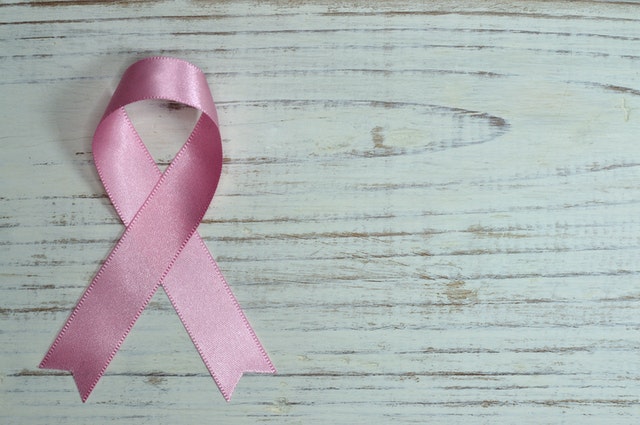depending on how you classify cancer, you could even say there are over 200 types.
All types of cancer originate in our cells. There are thousands of billions of cells in our bodies, grouped into tissues and organs including muscles, bones, lungs and liver. Each cell contains genes that tell it when to grow, work, divide and die. Normally, our cells follow these instructions and we stay healthy. But sometimes the instructions get confusing, causing our cells to grow and divide in a disordered way or not die as they should. As more and more abnormal cells grow and divide, they can end up forming a mass in the body called a tumour.
Are all tumours cancerous?
No. Some types are non-cancerous (benign). Non-cancerous tumours are made up of cells that stay in one place and do not spread. But these tumours can still grow quite large. Non-cancerous tumours also do not usually come back once they are removed.
Other types are cancerous (malignant). Cancerous tumours can invade nearby tissue and spread to other parts of the body. This happens when cancer cells enter the blood or lymphatic system. Even after the cancer tumour is removed, the cancer may come back because cancer cells may have already spread from the tumour to other parts of the body.
It is important to find the cancer as soon as possible, when it is usually smaller and easier to treat and less likely to have spread.
Is bladder cancer that spreads to the lungs called lung cancer?
No. Cancer is named after the part of the body where it starts. For example, a cancer that first appears in the bladder is called bladder cancer. When bladder cancer spreads to the lungs, the cancer in the lungs is made up of bladder cancer cells. These new tumours in the lungs are called lung metastases. So it is bladder cancer with lung metastases.
Cancer that has spread to the lungs from another part of the body could also be called secondary lung cancer. If the cancer originates in the lungs, it is simply called lung cancer or primary lung cancer.
One of the first signs that the cancer has spread (metastasized) is often swollen lymph nodes, such as those in the neck, armpit or groin. But cancer can spread to almost any part of the body.
Solid tumours versus blood cancers
Many types of cancer form solid tumours (masses), but some do not. Blood cancers, such as leukemia, differ from other types of cancer because cancer cells tend to accumulate in the blood and bone marrow and may not form masses. Because cancer cells are already circulating in the blood, blood cancers are more often spread throughout the body when they are diagnosed.
What are cancers called?
Most cancers are named according to the part of the body in which they originated, such as breast cancer or prostate cancer. But others have scientific names such as leukemia, lymphoma and myeloma. And some types of cancer are named after the person who discovered them, such as Hodgkin’s lymphoma (for Mr. Hodgkin) and Wilms’ tumor (a type of kidney cancer that affects children).
Cancers are also named according to the type of tissue in which they arise.
Carcinoma
Carcinoma is a cancer that starts in the skin or the tissues that line or cover organs. This lining is called epithelium and is made up of different types of cells. Carcinomas are the most common types of cancer. Some examples are as follows:
- Adenocarcinoma starts in glandular cells such as those in the intestine, lungs or prostate;
- Basal cell carcinoma starts in the skin;
- Squamous cell carcinoma originates in the skin (known as squamous cell carcinoma) or in mucous membranes such as those lining the mouth and vagina;
- Transitional carcinoma originates in the urinary tract within organs such as the bladder or ureters.
Sarcoma
Sarcoma is a cancer that starts in connective or supporting tissues such as bone, muscle, fat, cartilage and blood vessels. Sarcoma is rarer than carcinoma. Here are a few examples of sarcomas:
- angiosarcoma
- osteosarcoma
- chondrosarcoma
- liposarcoma
- myosarcoma
Melanoma
Melanoma is a type of cancer that starts in cells called melanocytes. These cells make melanin, a pigment responsible for skin colour. Most melanomas appear on the skin, but they can also appear in any part of the body that contains melanocytes, such as the anus and eyes.
Blood cancers
Leukemia, lymphoma and multiple myeloma are types of blood cancer.
Leukemia
Leukaemia starts in the bone marrow, where blood cells are made. In a person with leukemia, there are many abnormal blood cells in the bone marrow and blood. This type of cancer does not form a solid tumour.
Lymphoma
Lymphoma is a cancer that starts in the lymphocytes. Lymphocytes are a type of white blood cell that is part of the immune and lymphatic systems. In a person with lymphoma, many abnormal lymphocytes accumulate in the lymph nodes, lymphatic vessels, bone marrow, spleen and other parts of the body.
Multiple myeloma
Multiple myeloma is a cancer of the plasma cells, a type of white blood cell made in the bone marrow. Plasma cells are part of the immune system and produce antibodies that fight infection. In a person with multiple myeloma, many abnormal plasma cells, called myeloma cells, accumulate in the bone marrow. Myeloma cells can form tumours in bone or other tissues.

